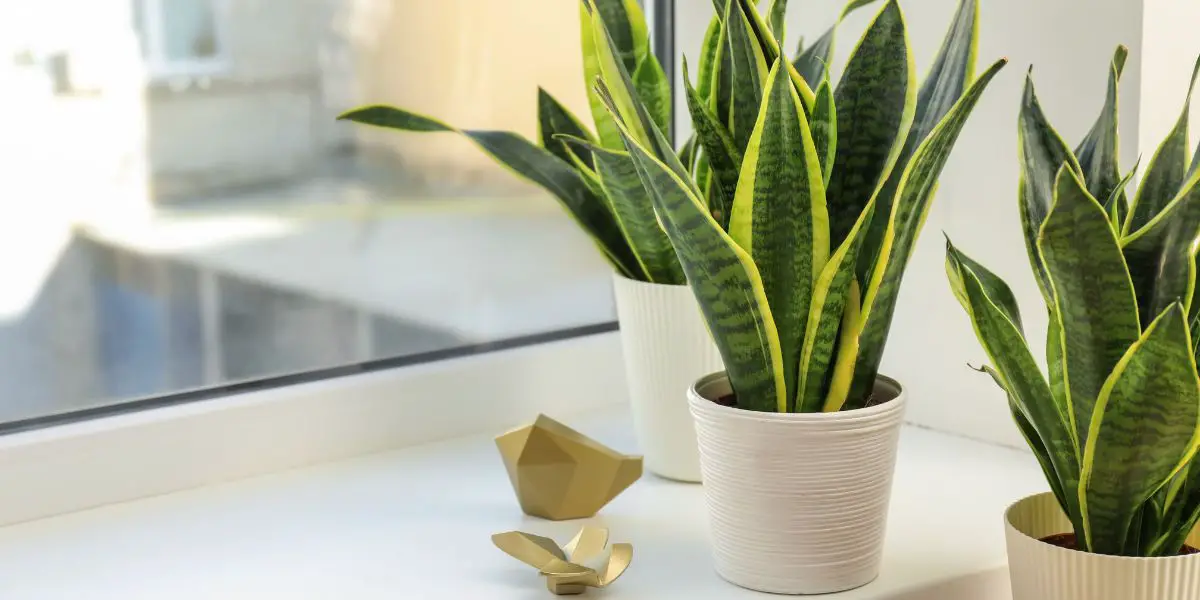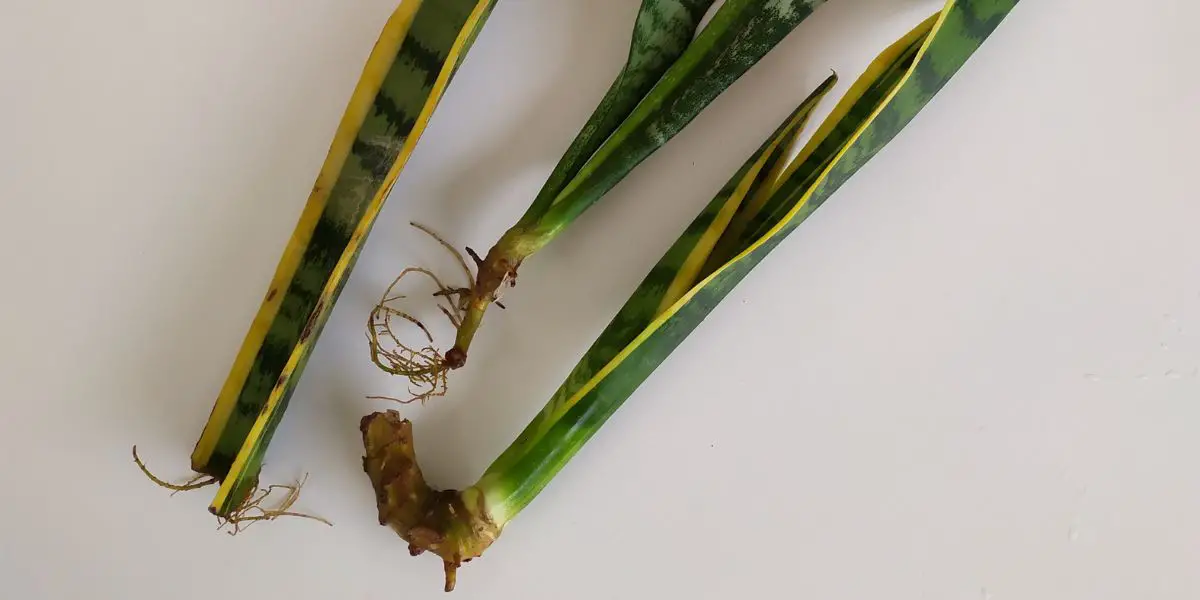Dracaena Trifasciata var. Laurentii, Sansevieria Trifasciata Laurentii, Variegated Snake Plant, Striped Mother In Law’s Tongue, Striped Snake Plant
Sansevieria Laurentii - The Ultimate Growing Guide
Sansevieria Laurentii - a cultivar of Sansevieria trifasciata (Dracaena trifasciata), is probably the most versatle of all sansevierias. It stays compact and looks great in any position. The leaves are thick and grow upright. It is very popular as a houseplant because of its great adaptability.
This plant has a unique look with its bright yellow edges and dark-green striped leaves. The height of 3' to 4' makes it perfect as a container plant.
Sansevieria Laurentii is hardy to about 25 degrees Fahrenheit. It likes lots of light and does best in bright, indirect light. It can be grown indoors and outdoors in even warmer climates as well.
Royal Horticultural Society has been awarded it of Garden Merit Award.
Details about Sansevieria Laurentii - The Ultimate Growing Guide "Dracaena Trifasciata var. Laurentii, Sansevieria Trifasciata Laurentii, Variegated Snake Plant, Striped Mother In Law’s Tongue, Striped Snake Plant"
Sansevieria Laurentii succulent plant, native to Africa, has been used for centuries in traditional African medicine. This snake plant variety can be found in many homes and offices as it is known for its ability to clean the air and remove toxins from the environment as well as it is very easy to grow and care for. That's why it is probably the most popular snake plant type as a houseplant.
It has long, narrow, flat, and stiff green leaves with zigzags light-green bands, arranged in a rosette pattern. Yellow edges appear on the leaves running parallel to their length.
This plant can grow up to 4 feet tall and 1.5 ft wide.
How to grow and care for Sansevieria Laurentii?

Growing and caring for this plant is easy. Like all other succulents, you need to provide good light, regular watering, and well-drained soil to get its optimal growth.
Provide bright indirect Sunlight
Sansevieria Laurentii needs bright light to grow to its full potential. It can adapt to low light conditions but that will also affect its growth as well.
Also, avoid exposing it to the extreme cold or hot sun during summer. It'll burn your plant leaves. Filtered sunlight or bright light.
Dracaena Laurentii needs well-drained Soil
Any well-drained soil will work well with your plant. However, it is best to provide succulents and cacti soil as they are made well-draining and nutrients rich. The soil should be able to hold moisture for enough time so the plant can absorb it.
Also, let your soil dry completely before watering again.
Water your plant properly
Watering properly is very important for the growth of any succulent plant. Water your plant more often during its growing period, i.e. once a week, while once a month during the dormant season. But make sure its soil is dry before you water it again.
Feed Fertilizer
Fertilize your plant regularly during its growing season from spring to summer. Use any balanced liquid fertilizer. Don't over-fertilize your plant. It may damage your plant.
Repot Sanseveria Laurentii if needed
Once your plant reaches its peak and it can't grow more, i.e. when it becomes too big, then repot it into a bigger container and fresh succulent soil.
Best time to repot a Sansevieria Laurentii is Spring.
Trim your plant
Trimming your plant occasionally can help it grow more and can keep its shape intact. Trim off any dead leaves or any fully yellow leaves. If you propagate healthy trimmed leaves, you'll get some new Laurantii plant babies as well.
Keep Your plant Clean and healthy
Wipe the leaves occasionally with a damp cloth. It'll look beautiful besides helping your plant grow better as well as you'll save it from some pests as well.
How to Propagate Sansevieria Laurentii?

Propagating a Sansevieria Laurentii is very easy. Propagation can be done by division, rhizomes, and leaf cuttings.
Propagating this snake plant variety from Division is the easiest and most rewarding as it'll already have a part of the rhizome as well as some leaves. So try to propagate by division if you can.
For a successful propagation, try propagating in the start of its growing season, i.e. Spring.
Propagate Sansevieria Laurantii from Division
To propagate this snake plant variety from division, you need to divide it into several sections during spring or summer. The sections should have at least 1 leaf each. Take a sharp knife and cut through the rhizome.
Now plant these divisions into well-draining succulent soil and start caring for it.
Repotting these succulent plants in new containers and fresh soil will help in faster growth.
Propagating Sansevieria Laurantii from Rhizome
Sansevieria Laurentii can be propagated from just rhizomes as well. For this, you need to cut a section off a rhizome. You can cut a 1/4-inch length.
Now, take a pot and fill it with a well-drained potting mix. Plant the cuttings and place them in a bright indirect sunlight spot or under grow lights.
Propagating Sansevieria Laurantii from Leaf cutting
Like most succulents, sansevieria Laurentii can also be grown from leaf-cutting. For this, take several 4-inch long leaves cuttings OR better take completely healthy leaves from the plant.
Now place these leaves on nutrients rich, well-draining succulents soil and place it in bright indirect sunlight or under grow lights. You'll need to mist these twice a day at least until they grow their roots.
Pests and Diseases of Sansevieria Laurentii
Sansevieria Laurentii is prone to most pests and diseases but sometimes vine weevils and mealybugs can affect it. You can simply spray a soapy solution or neem oil on the affected plants, and wash the leaves with a damped cloth.
Toxicity of Sansevieria Laurentii
It is mildly toxic to humans and animals if eaten. It may cause gastrointestinal irritation. So try to place this snake plant from the reach of your children and pets.
Sansevieria Laurentii blooming
It is rare for this plant to flower, but when it does, it blooms in Spring once a year with greenish-white, small, and a little bit fragrant flowers that look like lilies.
To make Sansevieria Laurentii bloom, feed it with a balanced fertilizer before the Spring starts. So it'll have enough nutrients/power to use in flowering. Also, place it in a well-lit area.
Where to Buy?
You can buy it from the following places
Sansevieria Laurentii Video
Check the video of this beautiful sansevieria laurentii snake plant variety by a Youtuber.
Frequently Asked Questions (FAQs)
How do you take care of Sansevieria Laurentii?
To take care of Sansevieria Laurentii, provide it with medium to bright indirect light and only water it when the soil is completely dry. Allow water to flow through the drainage hole and discard any excess water in the saucer. Sansevieria Laurentii prefers a dry environment, so avoid misting the leaves and provide good ventilation around the plant. With its ability to tolerate a variety of conditions, Sansevieria Laurentii is a low-maintenance plant that can bring beauty and function to any indoor environment.
Is Sansevieria a good indoor plant?
Yes, Sansevieria is a great indoor plant. It is known for its ability to thrive in a variety of lighting conditions, i.e. low light to direct sun, making it a versatile and low-maintenance choice for indoor gardening. Sansevieria is also known for its tolerance to dry conditions, making it an excellent choice for those who may not have a green thumb or who prefer to not water their plants too frequently.
In addition, the Sansevieria's attractive, stiff leaves and its air-purifying qualities make it a popular choice for adding a touch of nature to any indoor space.
Does Sansevieria need direct sunlight?
Sansevieria plant prefers medium to bright indirect light, but it can also tolerate lower light levels and even direct sun. However, it's important to avoid prolonged exposure to direct sun, as this can cause damage to the delicate leaves.
How do you care for a Sansevieria plant indoors?
Sansevieria plant prefers medium to bright indirect light, but it can also tolerate lower light levels and even direct sun. Water only when the soil is dry to avoid over-watering. Simply pour water into the soil until it flows through the drainage hole, and dispose of any excess water that accumulates in the saucer. Sansevieria plants thrive in a dry environment. With their origins in arid regions, they are well-adapted to low-humidity conditions and do not require frequent misting or high levels of moisture.
Facts & Features
-
1.5 ft Wide
This plant can grow up to 1.5 ft wide.
-
3 Propagation Types
Propagation can be done by division, offsets, and leaf cuttings.
-
4 ft Tall
This plant grows up to 4 ft tall
-
Bright Indirect Sunlight
Grows well in bright indirect sunlight.
-
Grows in spring and summer
Need more care during these times.
-
Normal Watering
Use regular succulent watering methods. Learn how to water succulents easily.
-
Not Cold Hardy
Protect from very low temperatures.
-
Pests: Mealybugs
Mealybugs appear like white cotton on the plant stem or leaves. You can remove them with a tweezer OR alcohol-infused cotton swab.
-
Slightly Toxic
Slightly toxic to humans and animals.
-
Suited for both Indoors & Outdoors
-
Zone 9a
In this zone, the temperature can drop up to 20° F ( -6.7° C )

